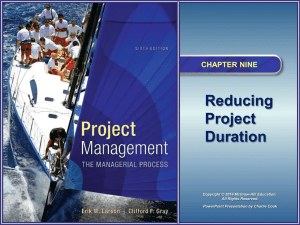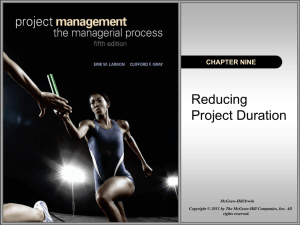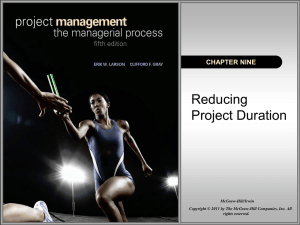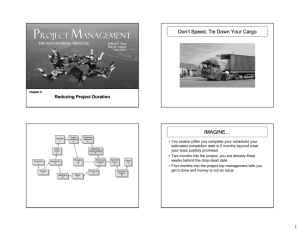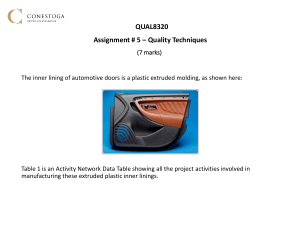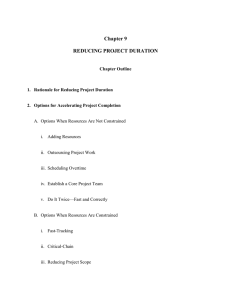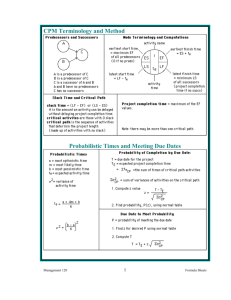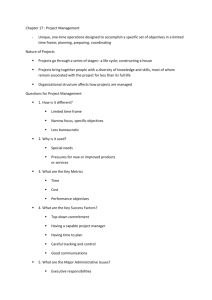Project Management
advertisement
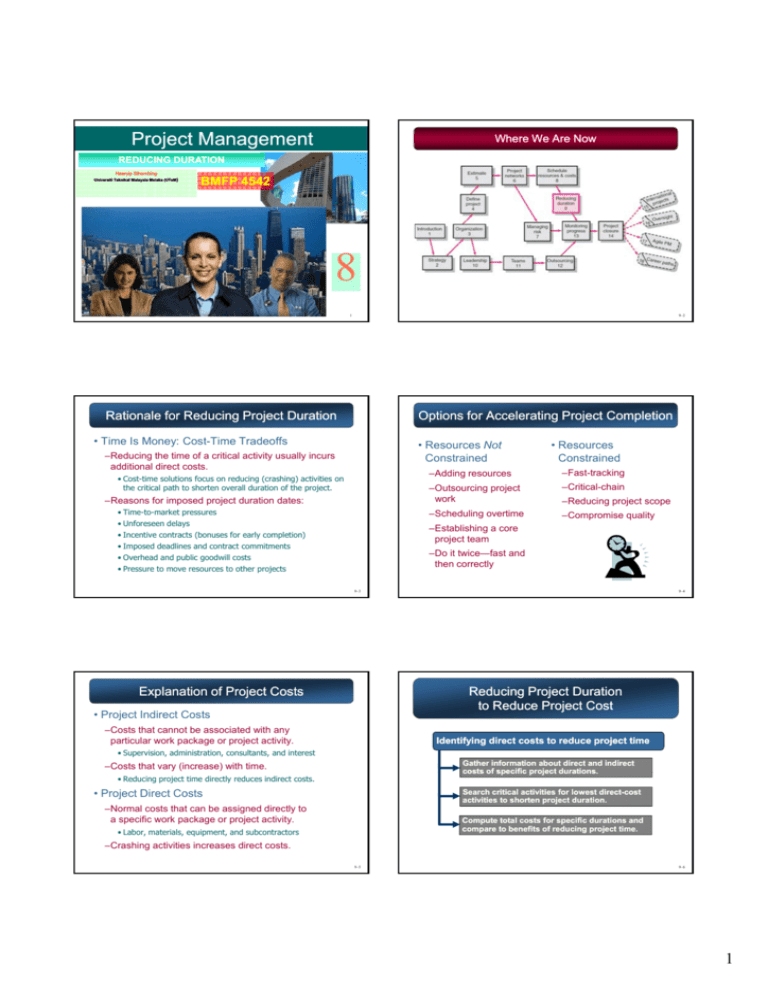
Project Management Where We Are Now REDUCING DURATION Haeryip Sihombing Universiti Teknikal Malaysia Melaka ((UTeM UTeM) BMFP 4542 8 1 9–2 Rationale for Reducing Project Duration Options for Accelerating Project Completion • Time Is Money: Cost-Time Tradeoffs • Resources Not Constrained –Reducing the time of a critical activity usually incurs additional direct costs. • Cost-time solutions focus on reducing (crashing) activities on the critical path to shorten overall duration of the project. –Reasons for imposed project duration dates: • Time-to-market pressures • Unforeseen delays • Incentive contracts (bonuses for early completion) • Imposed deadlines and contract commitments • Resources Constrained –Adding resources –Fast-tracking –Outsourcing project work k –Critical-chain –Scheduling overtime –Compromise quality –Reducing project scope –Establishing a core project team –Do it twice—fast and then correctly • Overhead and public goodwill costs • Pressure to move resources to other projects 9–3 Explanation of Project Costs 9–4 Reducing Project Duration to Reduce Project Cost • Project Indirect Costs –Costs that cannot be associated with any particular work package or project activity. Identifying direct costs to reduce project time • Supervision, administration, consultants, and interest Gather information about direct and indirect costs of specific project durations. durations –Costs that vary (increase) with time. • Reducing project time directly reduces indirect costs. Search critical activities for lowest directdirect-cost activities to shorten project duration. • Project Direct Costs –Normal costs that can be assigned directly to a specific work package or project activity. Compute total costs for specific durations and compare to benefits of reducing project time. • Labor, materials, equipment, and subcontractors –Crashing activities increases direct costs. 9–5 9–6 1 Project Cost– Cost–Duration Graph Constructing a Project Cost Cost– –Duration Graph • Find total direct costs for selected project durations. • Find total indirect costs for selected project durations. • Sum direct and indirect costs for these selected project durations. • Compare additional cost alternatives for benefits. FIGURE 9.1 9–7 9–8 Activity Graph Constructing a Project Cost Cost– –Duration Graph • Determining Activities to Shorten –Shorten the activities with the smallest increase in cost per unit of time. –Assumptions: • The cost relationship is linear. • Normal time assumes low-cost, efficient methods to complete the activity. • Crash time represents a limit—the greatest time reduction possible under realistic conditions. • Slope represents a constant cost per unit of time. • All accelerations must occur within the normal and crash times. FIGURE 9.2 9–9 Cost– Cost –Duration Trade Trade--off Example 9–10 Cost– Cost –Duration Trade Trade--off Example (cont’d) FIGURE 9.3 FIGURE 9.3 (cont’d) 9–11 9–12 2 Cost– Cost –Duration Trade Trade--off Example (cont’d) Cost– Cost –Duration Trade Trade--off Example (cont’d) FIGURE 9.4 FIGURE 9.4 (cont’d) 9–13 Summary Costs by Duration 9–14 Project Cost– Cost–Duration Graph FIGURE 9.5 FIGURE 9.6 9–15 Practical Considerations 9–16 What if Cost, Not Time Is the Issue? • Commonly Used Options for Cutting Costs • Using the Project Cost–Duration Graph –Reduce project scope • Crash Times –Have owner take on more responsibility • Linearity Assumption –Outsourcing project activities or even the entire project • Choice of Activities to Crash Revisited –Brainstorming cost savings options • Time Reduction Decisions and Sensitivity 9–17 9–18 3 Project Priority Matrix: Whitbread Project Key Terms Crashing Crash point Crash time Direct costs Fast-tracking Indirect costs Outsourcing Project cost–duration graph FIGURE 9.6 9–19 9–20 4
